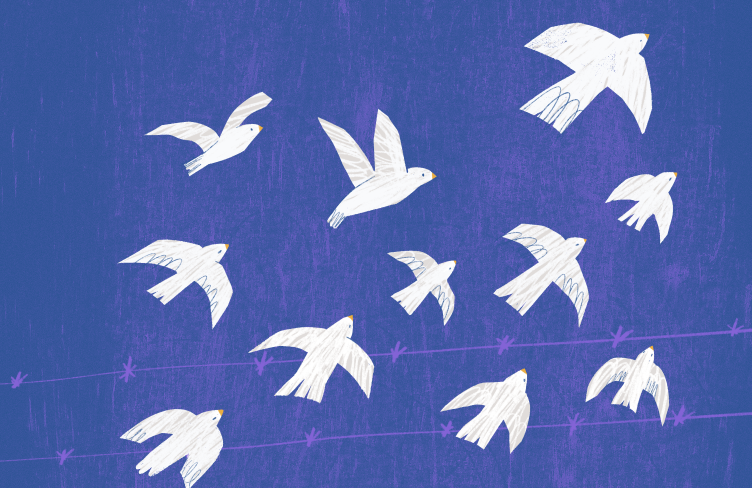
This blog was written by Ben Buckland, APT's Senior Adviser on Oversight, as a foreword for the Commonwealth Ombudsman's 2021-2022 Annual Report.
The Optional Protocol to the Convention against Torture came into existence 20 years ago. In terms of norms, it did nothing new. Countries around the world already had an obligation to prevent torture. In terms of practice, however, it was revolutionary.
By creating an international system of visiting bodies, including the Subcommittee for the Prevention of Torture (SPT) at the international level and national preventive mechanisms (NPMs) domestically, the OPCAT gave birth to a world in which no place where people are deprived of liberty should remain closed to outside eyes.
When the Association for the Prevention of Torture (APT) was asked to write this foreword to the Commonwealth NPM’s 2022 Annual Report, I thought it would be a good opportunity to introduce the OPCAT very practically, by talking about how, over the past two decades, NPMs around the world have shown the strength of this system and the approach it brings to solving problems in detention.
One of these is the way that NPMs bring an objective, outside gaze that enables them to question practices inside otherwise closed institutions. In Norway, for example, by conducting visits both during the day and at night, the NPM was able to discover that staff working different shifts did not interact and had their own subcultures and working methods, including relating to serious practices like the use of force.
NPMs around the world have also brought a clear focus on the most vulnerable people. The NPM of Paraguay for example, brought new attention, through its visits, to the institutionalisation of children, leading to the eventual closure of care homes for children and their reintegration into community and family environments.
While the focus of NPMs is on human dignity, broadly defined, they have also played a key role in uncovering and preventing the most serious violations of human rights. In the Philippines, for example, the Human Rights Commission, as Interim NPM, discovered a hidden cell behind a bookshelf in a Manila police station where men and women were ill-treated or even tortured in secret.
While many countries, before OPCAT ratification, had systems of complaints handling and investigation, NPM establishment has often brought with it a focus on systemic issues and processes that require a long-term approach. In Togo, for example, the NPM has sought to combat extreme levels of overcrowding by focusing on pre-trial detention: monitoring and making recommendations that relate to every step in the process from police custody to court appearances and prison. Where state institutions and civil society have often been in opposition in relation to detention issues, the OPCAT has provided an opportunity in many places to work more closely together. In Armenia, for example, the NPM has established a formal system for the involvement of civil society organisations (CSOs) in NPM visits, which allows them to benefit from CSO expertise.
OPCAT has also opened new places to monitoring. In New Zealand, before NPM establishment there was no independent monitoring of health and disability institutions. And once they began proactively visiting such institutions, they uncovered a number of serious problems, including the use of restraint beds, seclusion rooms and other controlling practices.
While much of the focus of NPMs is on detainees, they also play a role in improving working conditions for staff, as part of their systemic approach to detention. This has included, for example, work by the UK NPM to shine a light on the causes of severe staffing shortages in prisons and the impact this has had both on existing staff and on detainees.
The OPCAT system is also based on a spirit of dialogue and cooperation. This is why, for example, the Swiss NPM, when it decided to work thematically on youth detention, conducted a series of visits to juvenile detention places and then convened a closed-door meeting with the heads of each establishment to discuss and explain their recommendations in advance. While maintaining their independence, this discussion meant that the final recommendations were largely supported by the institutions themselves and thus much more likely to be implemented quickly.
Joining the OPCAT also means joining a global torture prevention community, where NPMs exchange good practices and support each other in their mission. For example, during the COVID pandemic, regular NPM webinars, hosted by the APT, allowed monitoring institutions from all world regions to share ideas on how to continue monitoring existing places, as well as how to approach visits to new places, including quarantine sites.
Australia is at a crossroads. Horrific events like those at Don Dale in 2016 and at Banksia Hill a few months ago have brought attention and recommendations to bear on problems that have existed for too long. Now, five years after OPCAT ratification, we have an opportunity to create change across the country – in law, in practice and in oversight – by establishing and fully funding NPM bodies in every state and territory. As the APT, we welcome these advances and stand with the Commonwealth Ombudsman and the NPMs in every state and territory as we move ahead: opening every closed institution to unannounced visits by independent monitors, at any time; and creating a framework for engagement and constructive dialogue on how to solve the problems that we all recognise are there.
Because together we can prevent torture.



